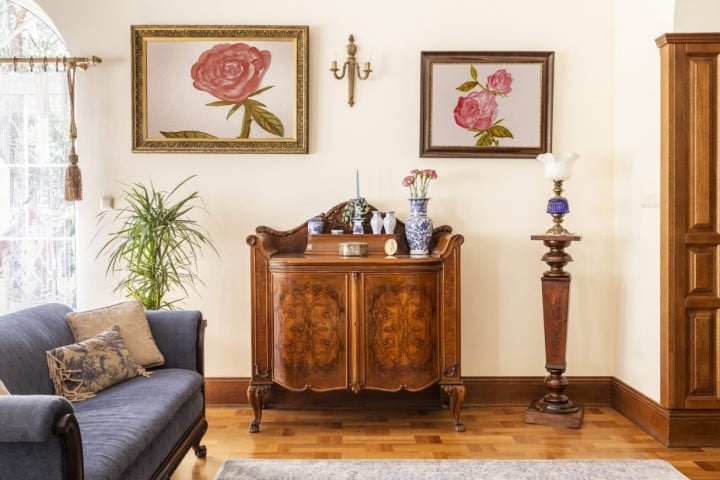Moving antiques and valuables requires extra care and preparation to ensure these cherished items arrive at their destination safely. Whether it’s a family heirloom, fine art, or an antique piece of furniture, the right approach can protect your treasures from damage during transit. This article will guide you through essential tips for moving antiques and valuables, including the importance of using a courier service for high-value items.

1. Understand the Value of Your Items
Before you begin packing, take the time to understand the value of your antiques and valuables. This includes monetary worth as well as sentimental significance.
- Get Appraisals: Have your items professionally appraised to determine their value. This is particularly important for insurance purposes.
- Document Everything: Take high-quality photos of each item from multiple angles. This documentation is crucial in case of loss or damage during the move.
2. Invest in Quality Packing Supplies
Using proper packing materials is essential to protect your antiques and valuables during transport.
- Choose Protective Materials: Use bubble wrap, foam, and soft blankets to cushion delicate items. Acid-free paper is ideal for wrapping items prone to tarnishing or discoloration.
- Sturdy Boxes: Invest in high-quality, double-walled boxes that can withstand weight and pressure. Custom crates are an excellent option for larger or irregularly shaped items.
- Label Clearly: Mark boxes containing fragile or valuable items with “Fragile” and “Handle with Care.” This ensures extra caution during handling.
3. Use Proper Packing Techniques
Packing antiques and valuables requires precision to avoid scratches, dents, or breakage.
- Wrap Items Individually: Wrap each item separately to prevent them from colliding and causing damage.
- Fill Gaps: Use packing peanuts or crumpled paper to fill empty spaces in boxes, reducing movement during transit.
- Disassemble When Possible: For large items like antique furniture, disassemble pieces where appropriate and pack components separately.
4. Consider Climate Control for Sensitive Items
Certain antiques, such as paintings, wooden furniture, and musical instruments, are sensitive to temperature and humidity fluctuations.
- Opt for Climate-Controlled Storage: If you’re storing these items temporarily, ensure the facility maintains a consistent temperature and humidity level.
- Transport with Care: Use climate-controlled vehicles to minimize exposure to extreme conditions during transit.
5. Use Dedicated Couriers for High-Value Items
When it comes to moving high-value antiques and valuables, entrusting them to a dedicated courier service is often the safest choice.
- Why Use a Dedicated Courier?
- These services specialize in handling fragile and valuable items, ensuring they are transported securely.
- Dedicated couriers often provide additional services such as custom packaging and white-glove handling, which are ideal for delicate or irreplaceable items.
- They offer tracking and insurance options tailored to high-value shipments, giving you peace of mind.
- Finding the Right Courier: Research companies with experience in transporting antiques and valuables. Read reviews and ask for references to ensure their reliability.
By choosing a dedicated courier, you minimize the risk of damage, loss, or mishandling during the move.
6. Insure Your Antiques and Valuables
Even with the best precautions, accidents can happen. Protect your investment by securing appropriate insurance coverage.
- Evaluate Insurance Options: Check whether your existing homeowner’s insurance covers moving damages. If not, consider purchasing additional coverage specifically for antiques and valuables.
- Document the Condition: Provide your insurer with photos and appraisals to streamline the claims process in case of an incident.
7. Hire Professional Movers Specializing in Antiques
If a dedicated courier isn’t suitable for all your items, look for moving companies with expertise in handling antiques and valuables.
- Specialized Training: Professional movers trained in antique handling understand the fragility and value of such items.
- Tailored Services: Many companies offer custom crating, padding, and other protective measures for delicate items.
8. Plan Your Move Strategically
Timing and organization can make a big difference when moving antiques and valuables.
- Avoid Rush Periods: Plan your move during less busy times to reduce the risk of rushed handling.
- Create a Checklist: Keep track of all valuable items and their respective packing and transport requirements.
- Supervise Loading and Unloading: If possible, be present during these critical stages to ensure items are handled with care.
9. Unpack Carefully
Once your antiques and valuables have arrived at their destination, unpack them with the same care as when you packed them.
- Inspect for Damage: Examine each item as you unpack and document any issues immediately.
- Reassemble with Caution: If you disassembled items for transport, reassemble them using proper tools and techniques.
Final Thoughts
Moving antiques and valuables requires meticulous planning, careful packing, and the right services to ensure their safe arrival. From investing in quality materials to hiring a dedicated courier service, these steps help protect your treasured items during transit. By taking the time to prepare properly, you can enjoy peace of mind knowing that your valuables will remain in pristine condition throughout the move.
We hope you found this blog post Moving Antiques and Valuables? Here’s What You Need to Know, useful. Be sure to check out our post How to Store Antiques to Make Moving Easier for more great tips!
Have Experience in the Moving Industry? Want an Additional Income Stream? Work With All Around Moving!
All Around Moving’s Work With Us program, provides experienced moving consultants with the opportunity to run their own Relocation Consultant business from anywhere in the USA. Join our unique program and we’ll help you profit. Click here to learn more.





